
Clinical Reasoning Cycle, (LevettJones et al., 2010). Download
Clinical reasoning is at the core of health professionals' practice. A mapping of what constitutes clinical reasoning could support the teaching, development, and assessment of clinical reasoning across the health professions. Methods
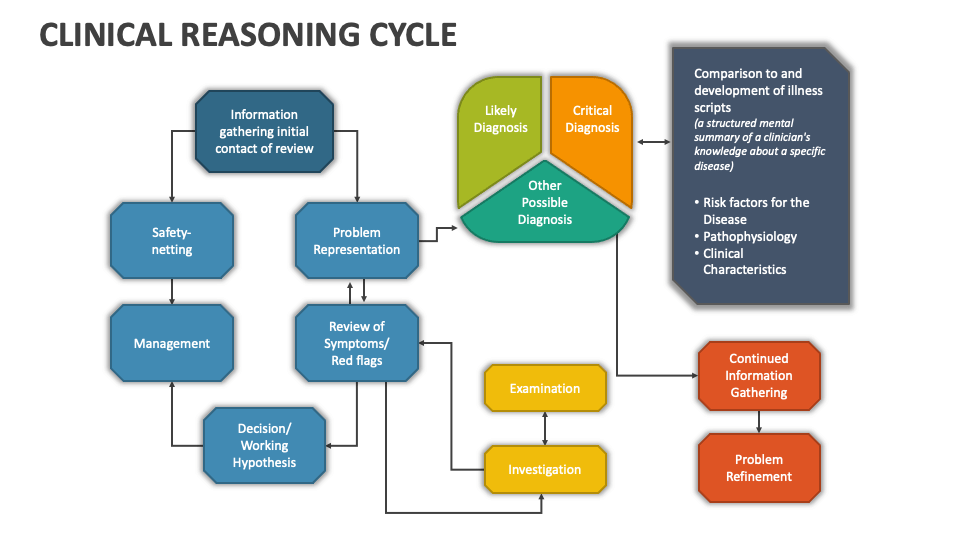
Clinical Reasoning Cycle PowerPoint and Google Slides Template PPT Slides
Definitions of clinical reasoning vary widely. 1 For the purposes of this paper, clinical reasoning is defined as a skill, process, or outcome wherein clinicians observe, collect, and interpret data to diagnose and treat patients. 2, 3 Clinical reasoning entails both conscious and unconscious cognitive operations interacting with contextual fact.
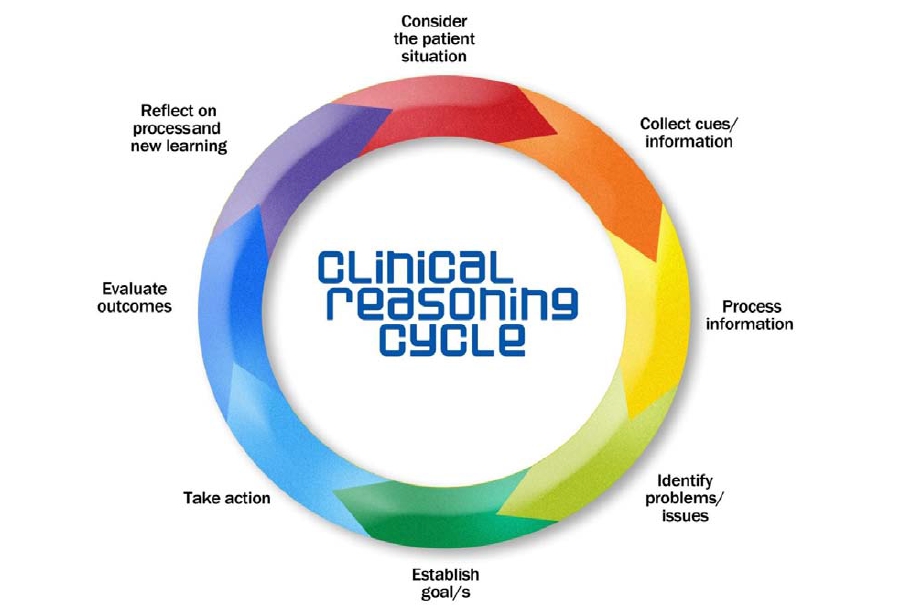
The Clinical Reasoning Cycle The 8 Phases and their Significance
INTRODUCTION In this introductory chapter, we explore what 'thinking like a nurse' means. We discuss the importance of clinical reasoning, outline the clinical reasoning process and illustrate how clinical errors are linked to poor reasoning skills.

Guide On Clinical Reasoning Cycle and Model
Clinical reasoning in differential diagnosis. Experts use three main methods, or a combination of these, in making a diagnosis. Probably the most common is the hypothetico-deductive approach. An initial hypothesis or hypotheses are generated very early during the initial presentation of the problem, from existing knowledge, associations, and.

6 Steps of the Clinical Reasoning Cycle Assignment Writing Help Blog
In this learning package we use the term clinical reasoning to describe the process by which nurses (and other clinicians) collect cues, process the information, come to an understanding of a patient problem or situation, plan and implement interventions, evaluate outcomes, and reflect on and learn from the process (Hoffman, 2007; Kraischsk & An.

8 Phases of Nursing Clinical Reasoning Cycle By Tracy LevettJones
Clinical reasoning is a multi-faceted and complex construct, the understanding of which has emerged from multiple fields outside of healthcare literature, primarily the psychological and behavioural sciences. The application of clinical reasoning is central to the advanced non-medical practitioner (.
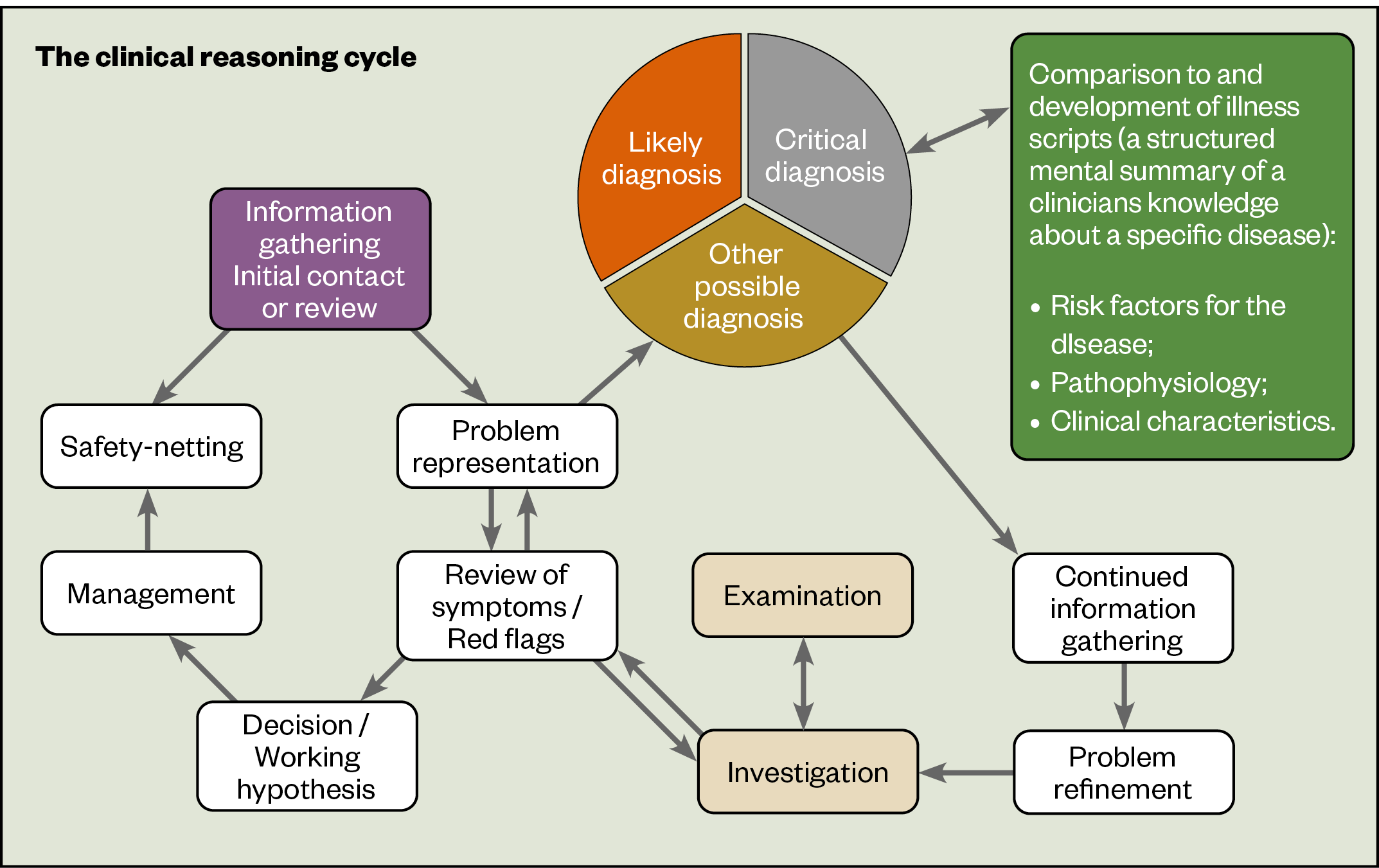
How to use clinical reasoning in pharmacy The Pharmaceutical Journal
Machine Learning and Prediction in Medicine — Beyond the Peak of Inflated Expectations. Jonathan H. Chen, M.D., Ph.D., and Steven M. Asch, M.D., M.P.H. Article. Figures/Media. Metrics. Big data.
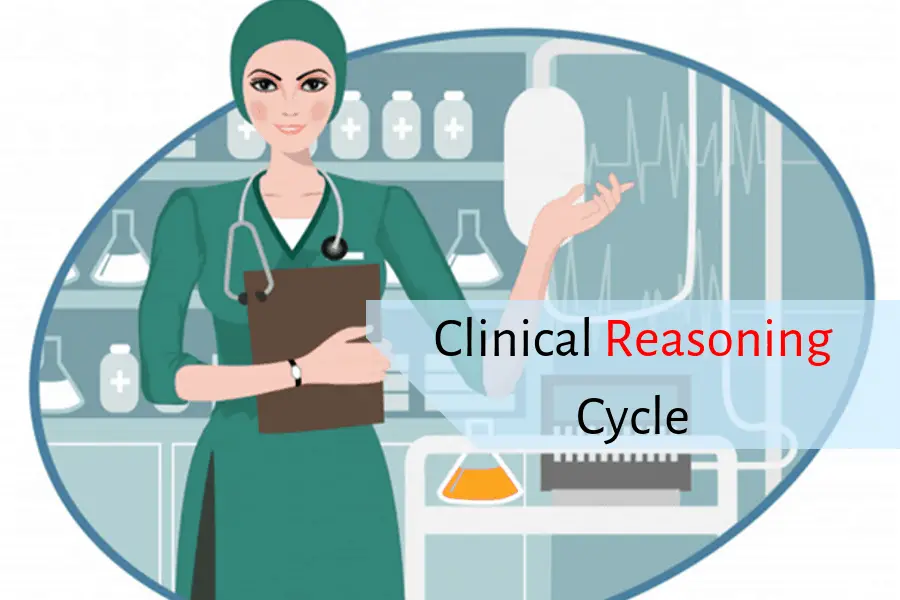
Importance of Clinical Reasoning Cycle and How to Improve It
Clinical reasoning is considered a crucial concept in reaching medical decisions. This paper reviews the reasoning processes involved in clinical reasoning from the perspective of cognitive psychology. To properly use clinical reasoning, one requires not only domain knowledge but also structural knowledge, such as critical thinking skills.
Pathway for clinical reasoning process.... Download Scientific Diagram
This chapter introduces the concept of clinical reasoning. It attempts to define what clinical reasoning is and what its features are. Solving clinical problems involves the ability to reason about causality of pathological processes, requiring knowledge of anatomy and the working and pathology of organ systems, and it requires the ability to compare patient problems as patterns with instances.

From principles to practice embedding clinical reasoning as a
Clinical reasoning and judgment are examined in relation to other modes of thinking used by clinical nurses in providing quality health care to patients that avoids adverse events and patient harm.

Klinisch redeneren Clinical reasoning cycle
Clinical reasoning is a perennial focus of medical education, performance assessment, and study. It might be argued to be the defining characteristic of the profession. It is, however, a very complex and multi-faceted phenomenon that can create considerable confusion and cross-communication.

Template of Clinical Reasoning Cycle example 2 Foundations in
Background: Clinical reasoning is an important skill that enables health care professionals to identify and evaluate patients' real or potential problems, implement appropriate interventions, solve clinical problems, and improve the quality of health care and patient outcomes. Purpose:
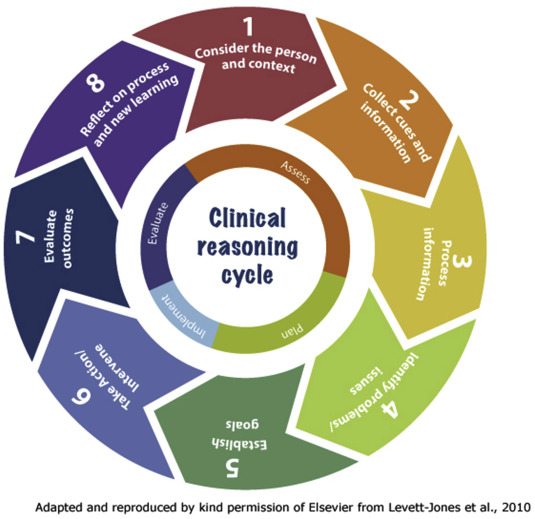
Nursing Clinical Reasoning Cycle Examples Free Sample for Students
This video talks about the clinical reasoning cycle using a case study as an example. This video demonstrates the care of an older person (Mr Cyril smith) by.

Critical Thinking Australian College of Nursing (2022)
The whole clinical reasoning cycle in nursing follows the following stages. These stages are discussed below by the experts delivering nursing care plan assignment help in Australia. Stage 1: The first stage in the clinical reasoning cycle is necessary for nurses in order to explain the patient's situation. While conducting clinical reasoning.

PPT Clinical Reasoning Lumbosacral Dysfunction Assessment & Treatment
The Clinical Reasoning Cycle: The 8 Phases and their Significance How to Use the Coherence Principle in E-learning Clinical Reasoning and Critical Thinking: Integrated and Complementary The Modality Principle: Rationale and Limitations What is Clinical Reasoning and Why is it Important? Applying the Principle of Temporal Contiguity

Clinical Reasoning Cycle Step by Step I nT yI aN aD eS nG pR rI pR
Clinical reasoning is a multi-faceted and complex construct, the understanding of which has emerged from multiple fields outside of healthcare literature, primarily the psychological and behavioural sciences.